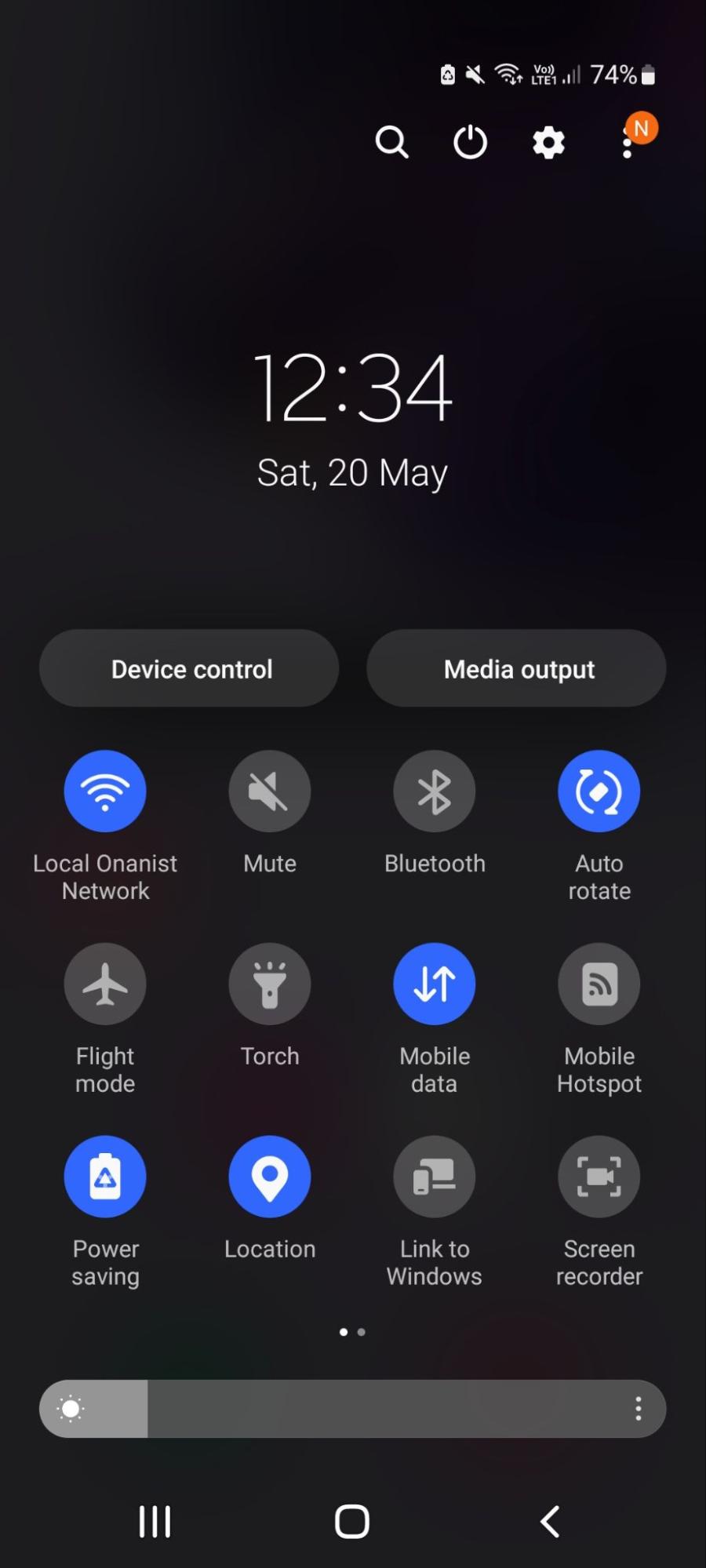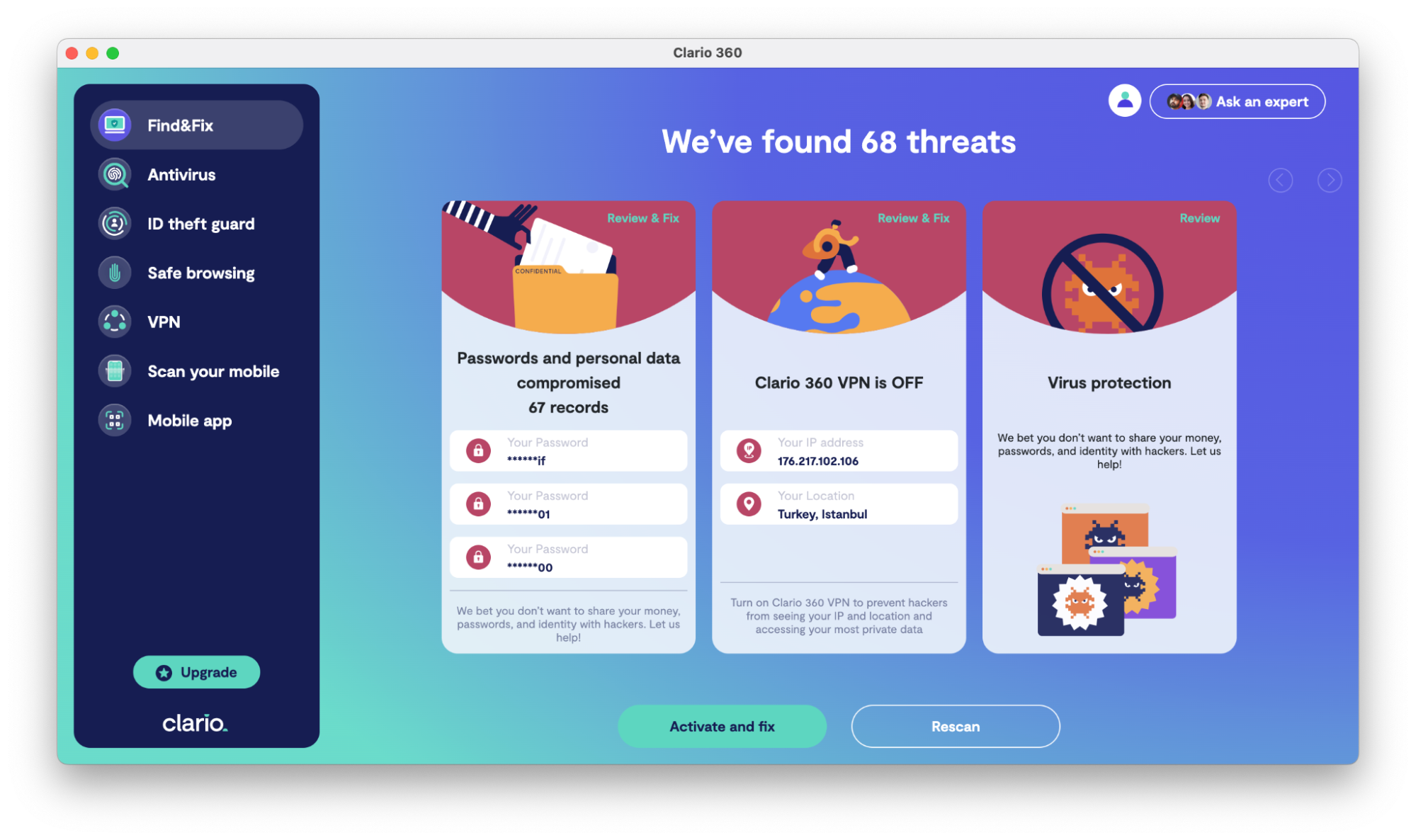Table of contents
- What is cyberstalking?
- What do cyberstalkers do?
- Examples of cyberstalking and cyberharassment
- Signs of cyberstalking
- Is cyberstalking a crime?
- How to prevent cyberstalking?
- Learn digital hygiene
- Disable your geolocation settings
- Use encrypted email and messaging apps
- Strengthen your privacy settings
- Check what is being published about you online
- Update your software
- Use a VPN
- Secure your router and IoT devices
- Use an antivirus software
- Make your social media profiles private
- Do not share sensitive information over the phone or over the internet
- Search the internet for your name
- Use a strong password to protect all your devices and accounts
- Be careful when using public Wi-Fi
- Use a disguised email and phone number
- Do not open attachments from suspicious email or SMS addresses
- Take precautions after a difficult breakup or conflict
- React immediately if you are hacked
- What can you do about cyberstalking?
- Avoid becoming a victim of cyberstalking
What is cyberstalking?
Cyberstalking definition
Cyberstalking is the use of electronic communication to harass or threaten someone in an unsolicited, repeated, and persistent manner. The intent of cyberstalking is to intimidate, manipulate, or control someone else's life or actions.
Cyberstalking can have long-lasting psychological effects on victims and can lead to more dangerous and frightening experiences. For this reason, it’s important to take immediate action if you or someone you know is a victim of cyberstalking.
What do cyberstalkers do?
Cyberstalkers consistently track and contact their victims via the internet. This involves typical stalking behaviors like monitoring, making false accusations, identity theft, damage to data or equipment, strongly worded threats of harm, and attempts to harm an individual's reputation. There isn’t much of a difference between cyberstalking and abuse.
Some actions that cyberstalkers take include:
- Sending threatening emails
- Posting personal information online
- Sending malicious software to a victim’s computer
- Cyberbullying
- Spreading rumors online
- Tracking a person’s activity.
Examples of cyberstalking and cyberharassment
Online stalkers might contact or trace your actions in a variety of ways. Here are five types of cyberstalking and harassment that might be used against you:
- Unwanted emails. Cyberstalkers use unsolicited email communications to harass and intimidate their victims.
- Social media harassment. Cyberstalkers use social media platforms to track and monitor their victims. They may use shared posts, images, and private messages to intimidate or manipulate victims.
- Online surveillance. Cyberstalkers use online surveillance tools such as computer tracking and spyware to monitor their victims’ activities. They may use this to gain access to confidential information or financial details.
- GPS tracking. Stalkers use the victim’s GPS signal (on apps like Snapchat) to track their physical location without permission.
- Catfishing. Attackers create fake social media or dating site accounts to approach their victims.
Signs of cyberstalking
There are many warning signs that you’re a victim of cyberstalking. While some of these red flags are obvious, many are not — so it’s important to keep your eye out.
Here are the 4 main signs of cyberstalking:
- You receive an abnormal amount of strange, explicit, or threatening messages and social media activity from the same person
- Someone contacts your friends and loved ones to get information about you
- Someone makes fake accounts in order to contact you or gain access to information about you
- Someone makes constant negative comments about you or “trolls” your accounts online.
Is cyberstalking a crime?
Not all countries have specific cyberstalking laws. However, some countries make stalking illegal under other laws. For instance, the US makes it illegal under anti-stalking and harassment laws. The lack of specific cyberstalking laws makes it difficult for perpetrators to face legal consequences, especially those who are careful enough to stay anonymous.
While the US has the Violence Against Women Act, which is a federal law, it doesn’t protect male victims. There is still a lack of federal legislation that addresses stalking done electronically, overall. After all, it’s easier for law enforcement to catch a stalker lurking around your home than it is to catch someone who’s bothering you with a fake profile online. That’s why stalking cases are notoriously hard to bring to prosecution
How to prevent cyberstalking?
Here are the ways you can prevent internet stalking from occurring to you:
- Learn digital hygiene
- Disable your geolocation settings
- Use encrypted email and messaging apps
- Strengthen your privacy settings
- Check what is being published about you online
- Update your software
- Use a VPN
- Secure your router and IoT devices
- Use an antivirus software
- Make your social media profiles private
- Do not share sensitive information over the phone or over the internet
- Search the internet for your name
- Use a strong password to protect all your devices and accounts
- Be careful when using public Wi-Fi
- Use a disguised email and phone number
- Do not open attachments from suspicious email or sms addresses
- Take precautions after a difficult breakup or conflict
- React immediately if you are hacked
Learn digital hygiene
Digital hygiene refers to using privacy-friendly practices while using the internet. These practices will ensure that your personal information and online privacy are protected at all times. This helps you avoid cyberstalking by preventing them from tracking you. It can be helpful when your ex is stalking you.
Here are some things to keep in mind:
- Stay off public Wi-Fi or use a Virtual Private Network (VPN) if you really need to connect to one
- Never click links in messages and emails that you aren’t 100% sure about
- Learn the signs of a phishing scam
- Use strong passwords and 2FA wherever you can.
Disable your geolocation settings
While turning your device’s location on can be useful, it can also help a stalker find your whereabouts – especially if you’ve been infected by spyware. Disabling your geolocation settings will ensure that your physical location is never shared with your stalker.
Here’s what you should do:
- First, make sure to check your phone for spyware and remove it from your iOS device, Android phone, or PC
- Find the geolocation settings in your phone and toggle location services off. For iPhones, go to Settings > Privacy & Security > Location Services
- On Android, drag down twice from the top of the screen and tap the Location icon to turn it off.

Use encrypted email and messaging apps
Secure messaging and email apps include end-to-end encryption so that online stalkers, internet service providers, and others can’t intercept your messages. Another benefit to using these apps instead of social media apps is that your stalker cannot simply create a new account and send you another unsolicited message.
Here’s what to do:
- Install and use one of the most secure messaging apps
- Encrypt your emails to hide them. Most email providers, including Gmail and Outlook, include a way for you to encrypt emails. Generally, they provide the option to use S/MIME encryption if your recipients use an app that supports it, too
- Switch to a more secure email provider like Hushmail.
Strengthen your privacy settings
To improve your cybersecurity, you should strengthen your privacy settings across all devices, accounts, and apps as much as possible. Even a small amount of personal information in the wrong hands can do a lot of harm. By increasing your privacy settings, you dramatically reduce the chances that a cyber stalker can find anything out about you.
Here’s what to do:
- Create strong, unique, and random passwords that are at least 12 characters long. Don’t use personal information in your passwords – this makes them easier to guess
- Change your Facebook, Instagram, Twitter, and TikTok privacy settings to control what other people can see about you
- Use anti-tracking software like Clario to prevent stalkers and advertisers from tracking your habits online.
Check what is being published about you online
Depending on who you are, what you’ve done, and your habits online, there may be tons of information about you that’s easily accessible online. To find out, search your name in Google and see what comes up. If you find anything that you’ve never posted on the internet, it’s a sign that someone is stalking you.
Here’s what to do:
- Submit a request to Google to remove the information from their search results. You can also ask Google to delete all photos from Google Photos
- If you’re in a country that adheres to the EU’s General Data Protection Regulation (GDPR), you can also request for organizations to erase your personal information.
Update your software
Software updates often patch vulnerabilities and provide added security against cyberattackers. If you let your software become outdated, you might be vulnerable to malware threats and spyware.
Make sure you update all of your software. This includes your operating system (whether you use an iOS device, Android, Windows, Mac, or other), apps, antivirus software, and anything else you use. Most of the time, your device will have the option to set automatic updates — we recommend leaving this on so that you don’t forget.
Use a VPN
VPNs are essential when it comes to online privacy and security. They encrypt all internet traffic to your device, ensuring that your activity can’t be monitored and you remain anonymous. Not only does this help you protect yourself from cyberstalking, but against advertisers and other trackers, including the government, too.
Secure your router and IoT devices
If you share your local network with other people, they could intercept your traffic and see what you’re doing. Likewise, Internet of Things (IoT) devices like smart home technology send and receive information about you and your whereabouts. Worse, if a stalker gets access to any in-home cameras, they could watch you throughout the day.
Here’s how you can secure your router and IoT devices:
- Change your router password from the default to something secure. Also, change any default passwords for your IoT devices so that strangers can’t connect to them
- Ensure that you use the highest level of encryption (WPA2) and turn off WPS (this lets people join your router by pressing the button without a password)
- Update your IoT devices as often as possible to reduce vulnerabilities
- Don’t store personal information on your smart devices.
Use an antivirus software
Antivirus software acts as a last line of defense against malicious programs like malware, viruses, and spyware. It detects and blocks these programs before they can infest your system and send your personal information to the attacker. It can also remove any malware that’s already present in your devices.
Clario provides powerful antivirus software for your Mac and Windows. It also provides spyware removal, anti-tracking software, a built-in VPN, and data breach monitoring to ensure your personal information isn’t for sale on the internet.

Make your social media profiles private
Public social media profiles make it easy for a stalker to harass you, and they’ll keep reaching out until you stop them. Set your social media profiles to private to have more control over who can access and engage with you. Anyone who sends you a friend request or tries to follow you will be subject to your approval or acceptance. This means you can simply ignore or reject profiles that have no business interacting with you.
Do not share sensitive information over the phone or over the internet
Many social media users post sensitive information like their full name, car registration and model, home address, and more. While they may be doing this innocently, there’s no telling who’s watching and listening. A cyberstalker can use that information to find and harass you, or, worse, commit a crime. Be careful about sharing personal information on social media, via email, and on the internet in general.
Search the internet for your name
A quick search of your name on the internet can reveal whether anyone has created fake accounts in your name or posted your personal information and pictures online. Whether these are catfish accounts or the information is posted as revenge, it constitutes online stalking. You can confront the fake accounts on the relevant websites or social media profiles and ask them to remove your information and stop using it.
Use a strong password to protect all your devices and accounts
In this day and age, using your birthdate as your password for all your online accounts and mobile phone passcode won’t cut it. Anyone trying to access them will know to try the most obvious passwords first, so you’d be making their job easy. Use a strong password with characters and letters instead. A password manager can help you create strong passwords and manage them easily in one place.
Be careful when using public Wi-Fi
Public Wi-Fi isn’t the most secure, so we strongly advise against using it. However, if you do use it sometimes, there are precautions you can take to protect your privacy. Ensure you use a VPN service to prevent a stalker from figuring out where you’re connecting from. Additionally, try to avoid inputting any personal information online while connecting to public Wi-Fi, so that it doesn’t end up in the wrong hands.
Use a disguised email and phone number
Many people use their real names and surnames in their personal email addresses and enter their phone numbers in online forms. While this may make your life easier, like when applying for jobs, it helps a stalker identify you. Consider using a backup email and phone number. Ensure your disguised email address doesn’t have any identifiable information in it, like your name.
Do not open attachments from suspicious email or SMS addresses
A stalker will exhaust all avenues to interact with you and leave no stone unturned. Their methods involve repeatedly sending you messages with no regard for the impact or implications of their actions. The goal is to get a response from you and that you’ll engage with them.
But they may also hope to infect your phone or computer (or both) with malware, like spyware. Malware allows them to monitor your activity on your devices, which is an invasion of your privacy. That’s why you should avoid opening attachments in emails and SMSes from known stalkers (like an ex-boyfriend) and strangers.
Take precautions after a difficult breakup or conflict
Speaking of exes, they, too, can stalk you after a breakup. In fact, partners can also stalk you after a big fight, especially if they don’t trust you or are obsessed with you. Friends and former friends can do this, too. Stalkers don’t understand the basic concept of boundaries, so you must focus on prevention. We advise changing your online passwords and keeping a low profile online after a bug fight or breakup with a friend or ex.
React immediately if you are hacked
If your phone or laptop starts behaving erratically, like your apps freezing and your battery depleting unusually fast, that may be a sign of hacking. Watch out for these signs and immediately run an antivirus scan to get rid of any viruses on your device and keep them out.
What can you do about cyberstalking?
By now, you should have an idea of whether you are being cyberstalked, and you’re probably wondering what you can do about it. Want to learn how to stop cyberstalking? Follow the tips below.
- Get a restraining order against your stalker. This will stipulate that they can’t come near you or contact you
- Read up on resources about stalking to inform yourself
- Tell your friends and family about the incident for moral support
- Stalking can be a form of abuse. Speak with a therapist to learn how to cope with being a victim of stalking
- Keep a record of every interaction with your stalker, including dates and areas. It’ll serve as evidence to prove cyberstalking to the police and in court if they violate the order. This increases the chances of them getting arrested.
Avoid becoming a victim of cyberstalking
Cyberstalking is common, but not all victims are aware it’s happening to them. This article will help you get a clear picture of what cyberstalking looks like — what it entails — so you can quickly identify when it’s happening to you and take action. More importantly, this information can help you prevent becoming a victim of cyberstalking.
The best way to avoid cyberstalking and being harassed online is to be careful about what you share. Never share personal information on social media or via text or email, especially with strangers. Change your online passwords after a breakup or toxic fight with an ex or former friend. More importantly, use Clario AntiSpy. This will prevent a stalker from spying on you online and protect your privacy.


